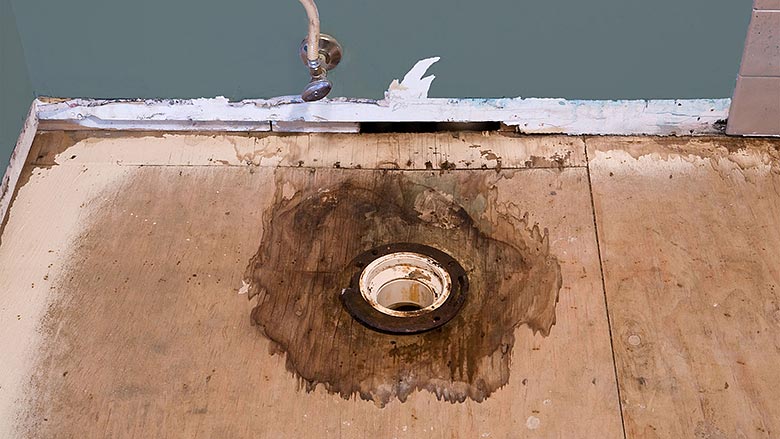We have come across this great article pertaining to Common Causes of Water Damage in a Bathroom directly below on the internet and figured it made sense to share it with you on this page.

The shower room is extremely vulnerable for wet buildup as well as prospective water damage as a result of the constant use water in it. This short article offers straightforward evaluation techniques to aid finding water damage hazards.
The constant use water in the restroom makes it exceptionally at risk for damp accumulation and also prospective water damage. By evaluating it frequently, you can reduce water relevant damages.
The adhering to collection of inspections is very easy to do and also must be done once in every 3 months in order to keep your washroom in good shape and to avoid potential water problems caused by the tub, the shower, pipe joints and also plumbing, sinks, cabinets, and also the bathroom
Do not forget doing these inspections and also be thorough while executing them. Keep in mind that these basic inspections can save you a great deal of money by giving early indicators for water damage
Sinks as well as Cabinets
Sinks and cupboards are revealed to wetness and also humidity day-to-day and are commonly overlooked. Check regularly under the sink as well as on the countertop above it. Fix any drip in the catch as it might suggest drainpipe problems. Browse the sink, slow-moving draining pipes may show a blocked drainpipe. Change sink seals if they are cracked or loose.
Tub and also Shower
The shower and bathtub need unique attention and upkeep. Examine the tiles and replace if fractured. Make sure that there is no missing cement in between the tiles. Examine as well as change cracked caulking at joints where the walls satisfy the flooring or the bathtub. Blocked drains pipes and also pipes problems will stop the tub from drying out and also might indicate major issues under the tub. Talk to a specialist quickly to prevent structural damage. Focus on stainings or soft locations around the bath tub wall surfaces as they may indicate an internal leak.
Plumbing
Signs for water damage are hard to spot because a lot of pipelines are mounted inside the wall surfaces.
Pay unique focus to floor covering and walls dampness and also stains as they may indicate an invisible plumbing problem. Check moisture levels in adjoining rooms as well.
The Toilet
The toilet is a vulnerable water joint. Examine the water lines and also look for leakages around the bathroom seat, in the hose pipe, as well as under the water storage tank. If you discover any type of indications of wetness on the floor around the toilet, check for leaks in the toilet rim and also container seals.
Realize that hanging bathroom bowl deodorants enhances the chances for clogs.
Water Damage Signs In The Bathroom To Avoid Cleanup
Musty smell
This is one of the easiest signs to catch because musty smells are so odorous. The damp, earthy, moldy smell should be a big red flag. The smell will develop when moisture gets trapped in surfaces, and begins to facilitate mold growth. Leaking pipes under cabinets, inside walls, and behind shower fixtures will cause moisture to stay trapped and not dry, which will lead to mold growth and spread. As soon as you notice any musty smells in your bathroom, have it checked for hidden water damage and cleanup signs.
Visible mold
If the smell isn’t there to give it away, sometimes you will actually see mold growth. Finding mold in your bathroom is a serious problem, because mold is very harmful to your health. By the time mold growth is visible, it also means that water damage has already occurred and been present for some time. The only way the mold problem can be resolved is to find the source of the moisture and get it stopped. To safely and adequately remove mold, you need to have professionals handle the remediation. Do not waste any time in getting mold problems addressed, fixed, and sanitized so that you can protect you and your family from the many respiratory symptoms caused by mold exposure.
Damaged floors
Bathroom floors should be able to withstand some exposure to water while still remaining in good condition. However, when excess exposure or water leaks occur, they will begin to damage even the most water-resistant flooring. If you notice any cracking, bubbling, staining, or warping on your bathroom floors, there is probably a water leak somewhere causing the distortion. If you notice areas of the floor have become softer, or even have a spongy feeling, there is probably damage to the subfloor. Subflooring is typically made up of plywood. When plywood is exposed to water or moisture, it will absorb it. Once it has become saturated, the weight of the excess water will cause the wood to swell and soften. Check the floors in your bathroom frequently to catch any of these sings before they lead to damaged subflooring.
Changes on walls
When water leaks behind walls, it will cause changes in the drywall. Peeling plaster, blistering paint, and soggy wallpaper are all good indicators that excess water is building up behind the wall. Water leaking behind drywall will cause it to swell and be soft to the tough. If you start to notice gaps along the trim of your walls, or where tile meets the wall, it could also be a strong indicator that there is a leak behind the wall. Any changes, distortion, or damage on the walls should be evaluated as soon as you notice it to prevent further water damage and cleanup.

Hopefully you enjoyed reading our article about Preventing Water Damage in the Bathroom. Thank you for taking time to browse our article. In case you appreciated our blog posting plz remember to pass it around. Thank you for going through it.
Schedule An Appointment